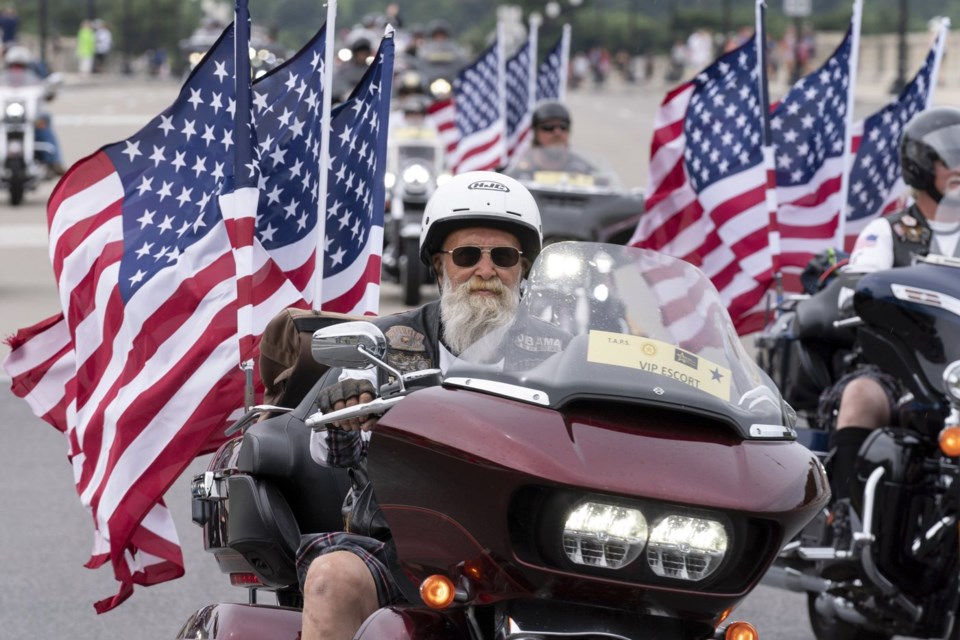A new study compiling decades of fatal motorcycle crashes is being released by the Insurance Institute for Highway Safety, which is pushing for stricter state road safety laws.
The study suggests that 20,000 motorcyclists who died in crashes in the U.S. since the mid-1970s would have survived if stronger helmet laws had been in place, according to the nonprofit group that seeks to reduce the harm from motor vehicle crashes
The organization said that 22,058 motorcyclists’ lives could have been saved if every state had required all riders to wear helmets from 1976 to 2022. The figure represents 11% of all rider fatalities over those years.
Only 17 states and the District of Columbia that have such laws in place.
The IIHS said that more than 6,000 motorcyclists were killed in both 2021 and 2022, the most recent years for which such data is available. The organization says that the death toll could be cut by as much as 10% if more states enacted all-rider helmet laws.
“We understand that requiring helmets for all riders everywhere would be unpopular with some motorcyclists, but this could save hundreds of lives each year," said Eric Teoh, IIHS director of statistical services and the author of the paper. "Those aren’t just numbers. They’re friends, parents and children.”
The rate of helmet use has increased both in places with and without mandatory helmet laws, according to the institute. Yet use rates in states with mandatory helmet laws were generally two to three times as high as in states without them over the study period.
Associated Press, The Associated Press



